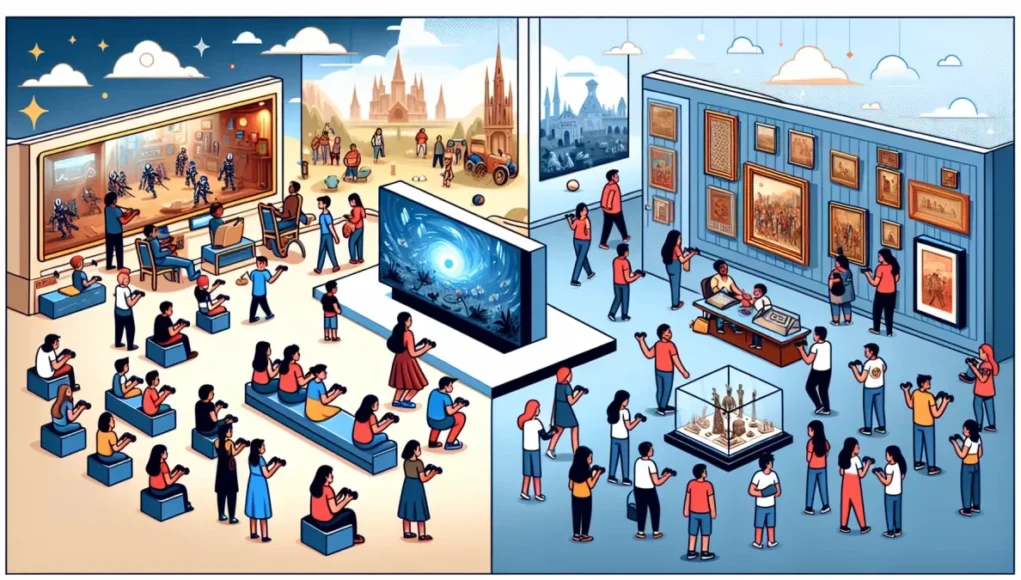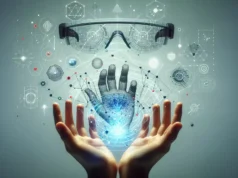In recent years, there’s been an awakening across industries – from gaming to museums. People are seeking interactive experiences that go beyond the bounds of the traditional. From the clicking of buttons in a video game to solve puzzles to wandering through history in the palpable presence of the past, audiences are hungry for a more engaging, immersive experience.
Gaming has always been a hotbed for cutting-edge, interaction-focused innovations, but museums are a relatively recent entrant in the field. Despite their staid reputation, museums across the world have begun to experience a renaissance with interactive experiences, drawing crowds away from the digital pastimes and into the tangible world.
Digital gaming, a booming industry estimated to generate $160 billion in 2020 according to Newzoo’s Global Games Market Report, has always been about interactivity. It began with simple text inputs, moved onto joystick-based controls, and evolved into complex, motion-captured movements. Today, gamers are eager to engage with multiple layers of interaction – solving puzzles, making choices, all while maneuvering their characters through virtual realities.
Video game design companies are breaking from traditional paradigms to offer gaming experiences that are increasingly interactive. Games like “Minecraft” and “Fortnite” are testaments to this drive for interactivity. These games allow players to bend the game world to their will, creating spaces, objects, and even narratives that are truly their own. Then there’s augmented reality (AR) game “Pokemon Go” that takes interactivity out of the living room, turning the entire world into a playground.
However, the craving for interactive experiences isn’t limited to the digital sphere. There is a similar revolution happening in the world of museums, institutions traditionally associated with quiet contemplation rather than active engagement. A report from the American Alliance of Museums highlighted that the thirst for interactive and experiential learning is pushing many museums to renovate their spaces and create exhibits that encourage visitor participation.
In the United States, The New York’s Museum of Modern Arts (MoMA) and San Francisco’s Exploratorium are among the frontrunners in this culture shift. MoMA encourages audio and video contributions from visitors, blending the line between audience and art. The Exploratorium deals with science, art and human perception, often using cutting-edge technology to create interactive installations that tap into the curiosity of the visitor.
In the United Kingdom, the Natural History Museum is similarly transforming. It has increasingly moved towards interactivity, offering tactile exhibits, immersive audio-visual displays, and even “Dippy,” an interactive dinosaur that answers questions via Twitter!
It’s clear then that the intersection of interactivity, tech, and artistry is becoming a popular space, drawing crowds globally. Whether it is to become part of a virtual world or touch and feel history, the interactive experiences are catching the fancy of the young and old alike.
The world is shifting gears from being passive receivers of information to active seekers of experiences. As the demand for shallow engagement wanes, the preference towards constructs that demand participation, learning, and interaction has seen a soaring rise. Both gaming and museums are capitalizing on this trend and work in tandem with technology developers to craft immersive experiences, evolving their mediums to satisfy the yearning for a connection deeper than the visual.
However, the biggest bellwether of the success of these interactive experiences is that they blur the line between physical and digital. Both streams provide a break from normality, offering a new layer via interactivity, and that might be just why they’re both becoming destinations of choice.
Sources:
1. American Alliance of Museums, “TrendsWatch 2019.”
2. Newzoo, “Global Games Market Report 2020.”
3. MoMA, “Visitor Engagement.”
4. Exploratorium, “Exhibit Collection.”
5. Natural History Museum, London, “About Dippy.”






